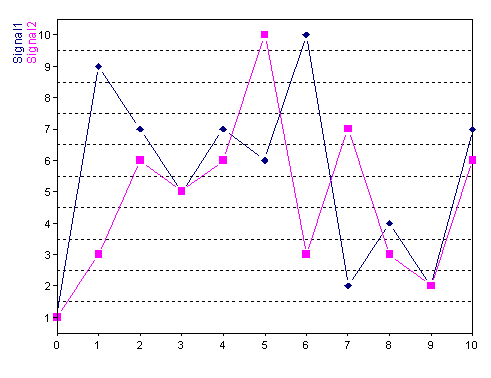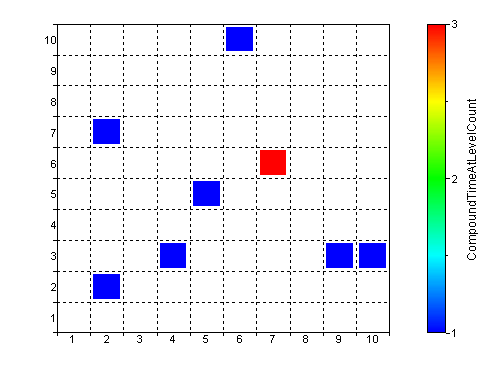CompoundTimeAtLevelCount (FPScript)
Performs a time-at-level count in accordance with the DIN 45667 standard synchronously for two signals.
Syntax
CompoundTimeAtLevelCount(Signal1, Signal2, ClassLimits1, ClassLimits2)
The syntax of the CompoundTimeAtLevelCount function consists of the following parts:
Part |
Description |
|---|---|
Signal1 |
The first signal to be examined. Permitted data structures are data series und signal. All real data types are permitted. If the argument is a list, then the function is executed for each element of the list and the result is also a list. |
Signal2 |
The second signal to be examined. Permitted data structures are data series und signal. All real data types are permitted. If the argument is a list, then the function is executed for each element of the list and the result is also a list. |
ClassLimits1 |
Contains a data series, which contains the class limits for the first signal. If ClassLimits1 contains n values, this leads to n-1 closed classes. The first or the last value in ClassLimits1 provides the lowest or highest limit of the class division. Values that lie outside the limits are not counted. Permitted data structures are data series. All real data types are permitted. The unit has to be compatible with that of parameter Signal1. If the argument is a list, then the first element in the list is taken. If this is also a list, then the process is repeated. |
ClassLimits2 |
Contains a data series, which contains the class limits for the second signal. Permitted data structures are data series. All real data types are permitted. The unit has to be compatible with that of parameter Signal2. If the argument is a list, then the first element in the list is taken. If this is also a list, then the process is repeated. |
Remarks
The result always has the data type 64-bit floating point.
The two signals should contain the same time values. The time values of the first signal will be used for the calculation. If the X component is missing, it will be created with a sampling rate of 1. Void values are not counted. The result is a signal series with a Z component with the dwell times in the Y component. The X component or Z component then contains the mid-points of the class divisions specified as the argument ClassLimits1 or ClassLimits2 respectively.
Available in
Option Counting Procedures
Examples
CompoundTimeAtLevelCount(Signal1, Signal2, (11., 0.5, 1), (11., 0.5, 1))
Performs a time-at-level count for the two signals 'Signal1' and 'Signal2'. Ten classes will be set for each of the two signals.


See Also
CompoundMaximumValueCount Function
